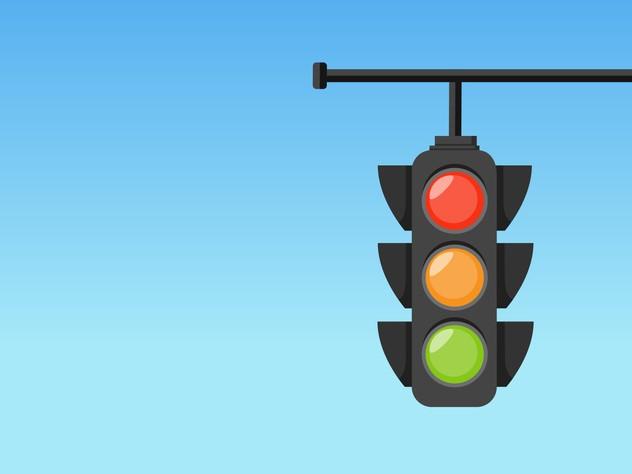In a world that has felt incredibly not fine recently, we still seem to lean heavily on exchanges of surface-level pleasantries in our day-to-day interactions. The standard “How are you?” “I’m fine, how are you?” exchange is certainly alive and well.
Many of us genuinely do care when we reach out and ask this question, but it can often feel difficult to navigate past it and onto a deeper, more meaningful conversation. What should I say next? Do I pry? Do I leave it alone? What happens if they say they aren’t fine – what am I supposed to say then?
Below, we will discuss using language from the “stress continuum” to develop a shared language with students and staff that will help navigate more meaningful and authentic discussions around shared human experiences related to stress and wellness.
The stress continuum was first developed for use in combat settings by the US marine corps to provide a snapshot of how marines were managing stress during combat deployments. It has since been adapted for a variety of settings to foster deeper discussions around stress and stress injuries. The stress continuum encourages individuals and teams to speak about their experience of stress as an expression of where it falls on a continuum moving from green to yellow to orange to red.

How to use the stress continuum to consider physical health
Think about how you might use this continuum to reflect on physical health. We each do things proactively to keep us feeling healthy (green), such as staying hydrated, getting exercise and managing our nutrition. Even if we do all these things consistently, we can still experience a minor injury such as a cut on the hand (yellow). If we experience a cut on the hand, we’re generally aware of the injury but also recognise that these things happen and usually heal on their own.
However, if, 10 days later, that cut becomes red, swollen and itchy, it would be important to recognise that the cut has become infected (orange). Assuming the injury will heal on its own at this point is no longer effective and taking immediate action is necessary. If the infection is ignored, it’s very likely the infection could become life threatening (red).
How to use the stress continuum to consider mental health
Now move from this example reflecting on how we manage our physical health – which feels quite simple – to how this might look when reflecting on our psychological and mental health. We are each responsible for proactively managing our mental health (green), yet even if we’re intentional with our wellness, we can still experience psychological injuries (yellow). The goal is to recognise those small injuries to ensure they heal properly instead of worsening to a psychological infection (orange). Ignoring an individual or team psychological infection can lead to severe and persistent psychological distress (red). Here are some useful – but not exhaustive – measures of the stress continuum relating to mental health:
I’m in the green (individual)
- Make restful sleep a priority
- Intentional focus on eating habits, exercise and staying hydrated
- Make time for social connection, hobbies and time in nature
- Be emotionally available to self and others
- Express gratitude
We’re in the green (team)
- Acknowledge accomplishments and efforts both big and small
- Meet requests for help with compassion and support
- Make time for team connection while also respecting personal time
- Take a team approach to feelings of overwhelm
I’m in the yellow (individual)
- Sleep loss
- Change in attitude
- Loss of creativity and motivation
- Fatigue
- Increased cynicism
- Avoidance
- Short fuse
We’re in the yellow (team)
- Burnout is accepted as the norm
- Staff and students dread work
- Transactional communication
- Requests for help are criticised
I’m in the orange (individual)
- Consistent sleep disturbances
- Emotional numbness
- Feeling trapped
- Disconnected from relationships
- Sense of suffering
We’re in the orange (team)
- Rigid expectations
- Staff and students feel undervalued
- Communication silos
- Suffering in silence
- Sense of helplessness
- Resources are scarce
I’m in the red (individual)
- Chronic insomnia
- Hopelessness
- Anxiety, panic and depression symptoms
- Feeling lost or out of control
- Thoughts of self-harm and/or suicide
We’re in the red (team)
- Lack of trust
- Gaslighting
- Culture of blame
- Fear in the workplace or classroom
- Hopelessness
The stress continuum in action
Adapting a version of the stress continuum as a shared language in the workplace and in the classroom can serve to normalise experiences and pinpoint concerns before they fester. For example, instead of starting a conversation with: “How are you? Great! Let’s get started”, work to integrate a more intentional and genuinely curious check-in with those inside your circle of influence.
In other words, consider the individuals that you are most connected to or responsible for (staff, students, co-workers, family, friends) and create opportunities to discuss which green activities you’re each engaging in, which yellow experiences are being managed, which orange experiences need attention, and what resources are available when in the red. These conversations can be hosted in person, virtually or even via a survey. Post pictures of the stress continuum in hallways, include it in newsletters, reserve the first 10 minutes of a weekly staff meeting to discuss where people are on the continuum and include discussion of it in team-building events.
This clear engagement with a shared language will encourage people to pause and recognise where they are as a team and increase awareness of their individual wellness more consistently. The goal is for all of us to show up with more curiosity regarding how we’re doing and to start having these conversations more frequently and authentically. By standardising the language and system, a more-connected and less-stigmatised environment can be fostered for everyone.
Sara Metz is the programme director for the master’s in military and emergency responder psychology programme at Colorado State University Global.
If you found this interesting and want advice and insight from academics and university staff delivered direct to your inbox each week, sign up for the THE Campus newsletter.




comment